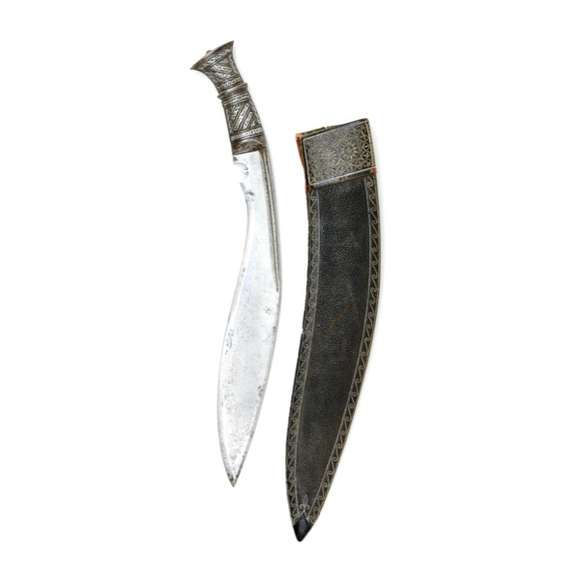An understated, elegant khukuri of substantial proportions with fine layered blade.

92 mm
49 grams
Wood
Madura, Indonesia
19th century
Jaap Polak, Amsterdam
Description
A beautifully carved Madurese keris hilt in the form of a stylized Dutch military uniform. Such hilts are called ukirans landhian pulasir or "Dutch cuirassier hilt."
The interpretation of Islamic law at the time prevented them from carving a full human figure, this is probably why we only see the helmet and parts of the uniform. Not even arms are depicted.
However, on the "belly" we do find a dragon, a lion, and a winged horse. The lion in the center is in a crowned cartouche and represents the coat of arms of the Netherlands. In the actual coat of arms, two more lions supper the center cartouche.
The characteristic helmet has the "flaming bomb" logo on the sides, which was the emblem for these troops.

Private of the 2nd Cuirassiers, 1810.
Formed in 1807-1807 from the 2nd Cavalry Regiment of Batavia.
Drawing by Herbert Knötel.

It comes with an old gilt copper alloy mendak.











With iron, silver overlaid hilt. Its associated scabbard features fine quillwork.
This peculiar sword was used by the Garo people of Assam for fighting, clearing the jungle, and animal…






